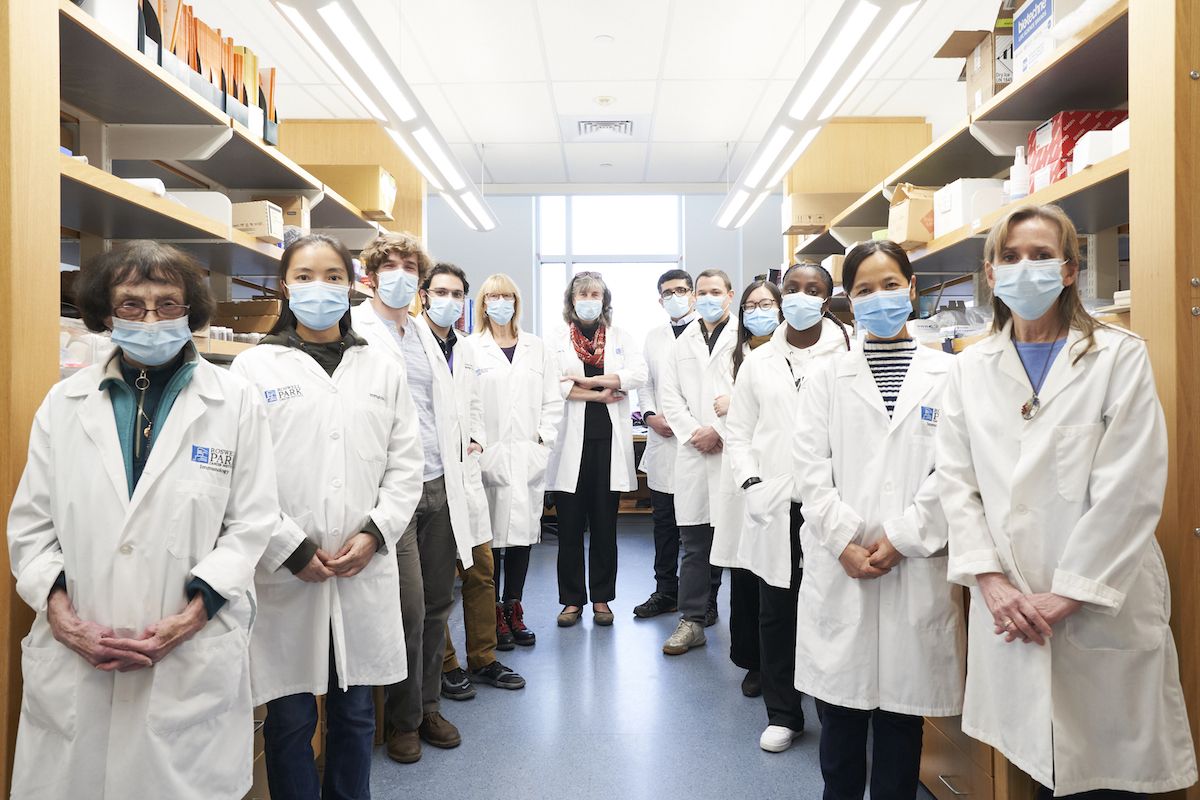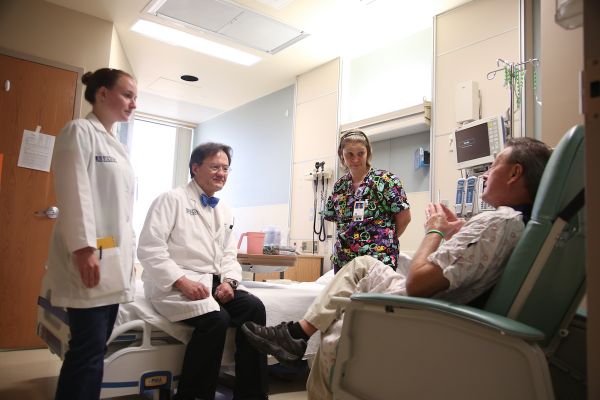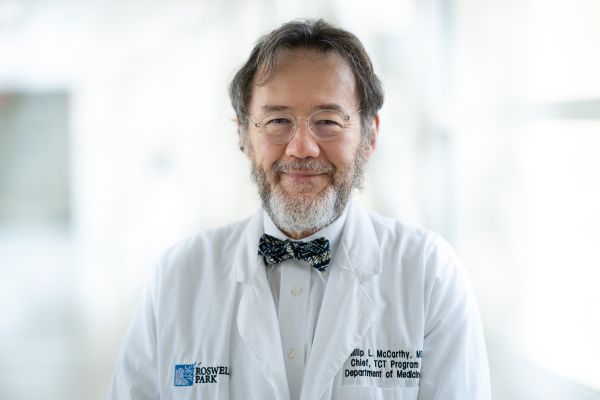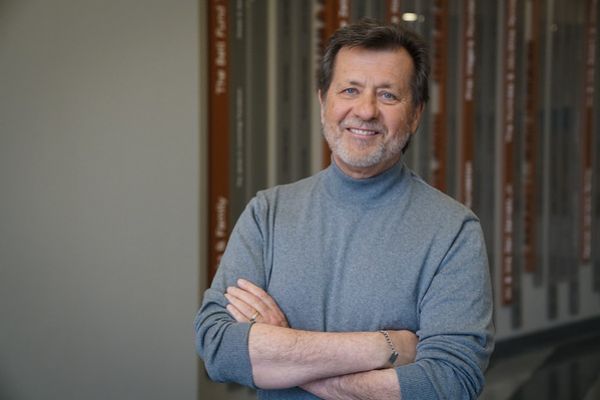Imagine that you’re waiting to cross the street when a car comes hurtling toward you and jumps the curb. Your body’s automatic “fight-or-flight response” kicks in. Your heart races, your muscles tense, and you leap out of the way just in the nick of time. That physical response saves your life. Shortly afterward, your breathing and heart rate return to normal, and you can relax.
But what happens when the effects of stress don’t go away? “For many individuals, an intense feeling of stress can be prolonged,” says Elizabeth Repasky, PhD, Interim Chair of Immunology and Co-Leader of the Cell Stress and Biophysical Therapies Program at Roswell Park Comprehensive Cancer Center. “Our research suggests that a constant state of stress suppresses the immune system.”
When your immune system is suppressed, your body becomes more vulnerable to viruses, bacteria and other foreign invaders, and your health suffers. But Dr. Repasky and her Roswell Park colleagues have discovered that suppressing the immune system temporarily could also have a positive effect in cancer patients who undergo a blood or marrow transplant involving a donor. They hope that harnessing the power of stress in those patients will lower their risk of developing a harmful condition called graft-versus-host disease (GVHD) while preserving the beneficial graft-versus-tumor effect (GVT). If all goes well, they could launch a clinical trial within a year to pave the way for doing just that.
What are GVHD and GVT?
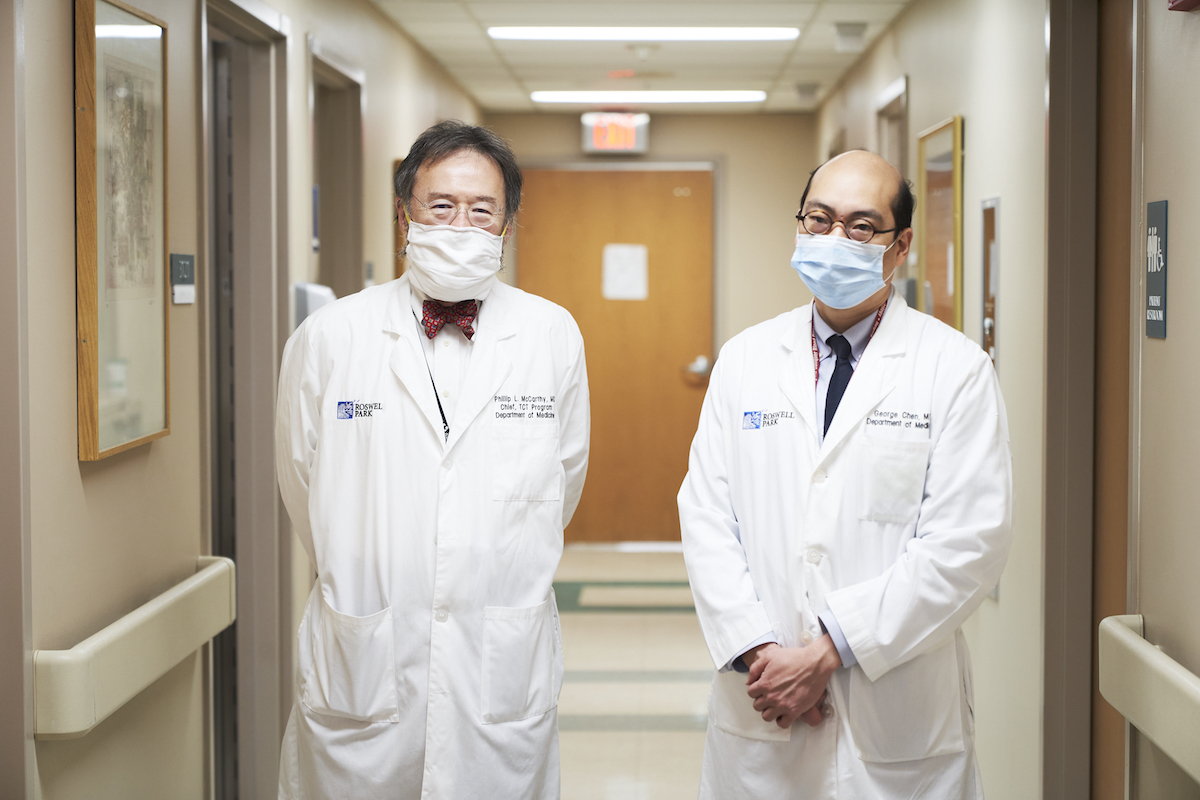
Cancers of the blood, which begin in the bone marrow, can be treated by destroying the patient’s diseased marrow with high doses of chemotherapy and/or radiation and then replacing it with healthy blood stem cells or bone marrow from a donor. This is called an allogeneic transplant.
GVHD occurs in transplants where the donor’s T cells — white blood cells that are part of the immune system — view the patient’s healthy cells as foreign and attack them. This can cause a wide range of complications ranging from skin rashes and hair loss to difficulty breathing, diarrhea and vomiting, and impaired liver function. GVHD can be mild or severe; sometimes it can even be life-threatening.
GVHD develops in up to 60% of patients who undergo allogeneic transplant, and “about 10-20% of patients develop really bad GVHD,” said George Chen, MD, formerly of Roswell Park’s Transplant and Cellular Therapy Program and member of the research team. “We’d like to see that percentage reduced.”
At the same time, allogeneic transplant also causes GVT — a good response that occurs when the donor’s T cells attack any cancer cells that weren’t destroyed by chemotherapy and radiation. Unfortunately, current treatments for GVHD also weaken the GVT effect.
That’s the tricky part for the research team: reducing GVHD without eliminating GVT.
“It’s just phenomenal”
Catecholamines (cat-ah-COLA-means) may hold the key. Dr. Repasky, who began this line of research five years ago, explains that our nervous system produces catecholamines when we experience stress. Data from her laboratory suggest that increased levels of catecholamines may protect against GVHD without hampering GVT.
She and postdoctoral researcher Hemn Mohammadpour, DVM, PhD, “are discovering the pathways of how this works,” explains Philip McCarthy, MD, co-investigator on these studies. “Dr. Mohammadpour has published some very interesting work on controlling GVHD and GVT and how they’re intertwined. It’s just phenomenal.”
Their research is pointing the way to therapies that could “temporarily mimic the effects of increased catecholamines in patients, to safely block GVHD,” says Dr. Repasky. Right now the team is evaluating drugs already approved by the FDA to control stress levels, including one used to treat asthma; terbutaline, a drug called a beta agonist that is used to control premature labor; and different medications used to keep high blood pressure in check.
The same strategy could also have the potential to protect against cytokine release syndrome, a potentially fatal complication in patients who receive CAR T-cell therapy, according to Drs. Mohammadpour and McCarthy. “We’re just beginning to scratch the surface of how this would work with CAR T cells,” says Dr. McCarthy, “but it’s something we’ll be looking at in the future, and obviously we’re very excited about this.”
Never miss another Cancer Talk blog!
Sign up to receive our monthly Cancer Talk e-newsletter.
Sign up!The potential of a biomarker
Meanwhile, Dr. Mohammadpour is trying to identify a biomarker in the blood of transplant patients that could reveal who is at greatest risk of developing serious GVHD. Over the past two years, the team has collected blood samples from “40 to 50 allogeneic transplant patients and a couple of CAR T-cell patients,” he says. The samples are stored in Roswell Park’s Data Bank and Biorepository (DBBR) for use in ongoing research. If Dr. Mohammadpour’s biomarker search is successful, Dr. McCarthy says, “it could help us predict outcomes and be able to target some patients for more-aggressive therapy.”
Funding for the research has come from several sources, including the National Cancer Institute, the National Heart, Lung, and Blood Institute, and donations to the Roswell Park Alliance Foundation. “It would be impossible to do these things without help,” says Dr. Mohammadpour, who hopes to apply for additional funding to launch the first clinical trial to evaluate the treatment.
Close collaboration between the basic laboratory scientists and clinical scientists is making it possible to move the idea rapidly from the lab bench to the clinic, to help patients faster. “Our group represents what Roswell Park is all about,” says Dr. Repasky.
“I’m a laboratory scientist,” she explains. “In our lab, we are beginning to understand the basic ways stress can influence immunity. And Dr. McCarthy — who cares for transplant patients in the hospital — “comes to every one of our lab meetings, so we learn about what problems his patients face and the kinds of therapies that generally aren’t working as well as they need to. This is an example of very basic research that got picked up by Dr. McCarthy. He said, ‘This could be really important for our patients.’
“You need both halves. In the laboratory we can talk about what we’d like to do for patients, but Dr. McCarthy can develop a clinical trial and make it work.”
